9 Felines with the Strongest Bites in the World


Written and verified by the biologist Cesar Paul Gonzalez Gonzalez
Felines are characterized by very flexible, slender, and dynamic bodies that help them to hunt with great dexterity. They’re obligate carnivores, and have specialized in stalking and capturing their prey. They also have powerful jaws with sharp fangs that are a deadly and efficient tool in hunting and feeding. But which are the felines with the strongest bites?
The Felidae family contains many different species, among which domestic cats, panthers, lions, and leopards stand out. Most of these felines have solitary behavior, and have developed bites that are strong enough to ensure they kill their victim in a matter of seconds. Keep reading to discover the felines with the strongest bites and most powerful and lethal jaws.
Felines with the strongest bites
An animal’s bite strength is usually measured in units of pressure per square surface. Therefore, it’s calculated in kilogram-force (pound-force) which calculates the pressure exerted by each jaw as it closes. This measurement increases or decreases according to the number and characteristics of the skull muscles.
Because it takes into account the particular conditions of each animal, the kilogram-force, or pound-force, isn’t affected by size, so it can be used to make fair comparisons between species. In fact, it could serve quite well to compare the bite forces of some felines. With this in mind, here’s a list of candidates that might have the most powerful bite of the bunch.
1. Caracal (Caracal caracal)
The caracal is a beautiful feline that shares some similarities with domestic cats, with the big difference being that its ears are quite large and stand out on its body. It measures on average between 60 and 90 centimeters long (2 to 3 feet), but its weight is fairly light at 14 to 17 kilograms (30 to 37 pounds).
Due to its small size, its bite force only reaches between 70 and 100 kilograms (154 to 220 pounds) in strength. However, this isn’t bad at all, as it’s almost double what an average-aged human can manage.
2. Serval (Leptailurus serval)
The serval is another magnificent feline that measures between 67 and 100 centimeters (2.2 to 3.3 feet) in length, with weights ranging from 8 to 17 kilograms (17 to 37 pounds). This makes it one of the smallest on the list, but this doesn’t mean that it hasn’t got a powerful bite. It can exert around 70 to 90 kilograms of bite force with its jaw (154 to 200 pounds), so it’s on a par with the caracal.
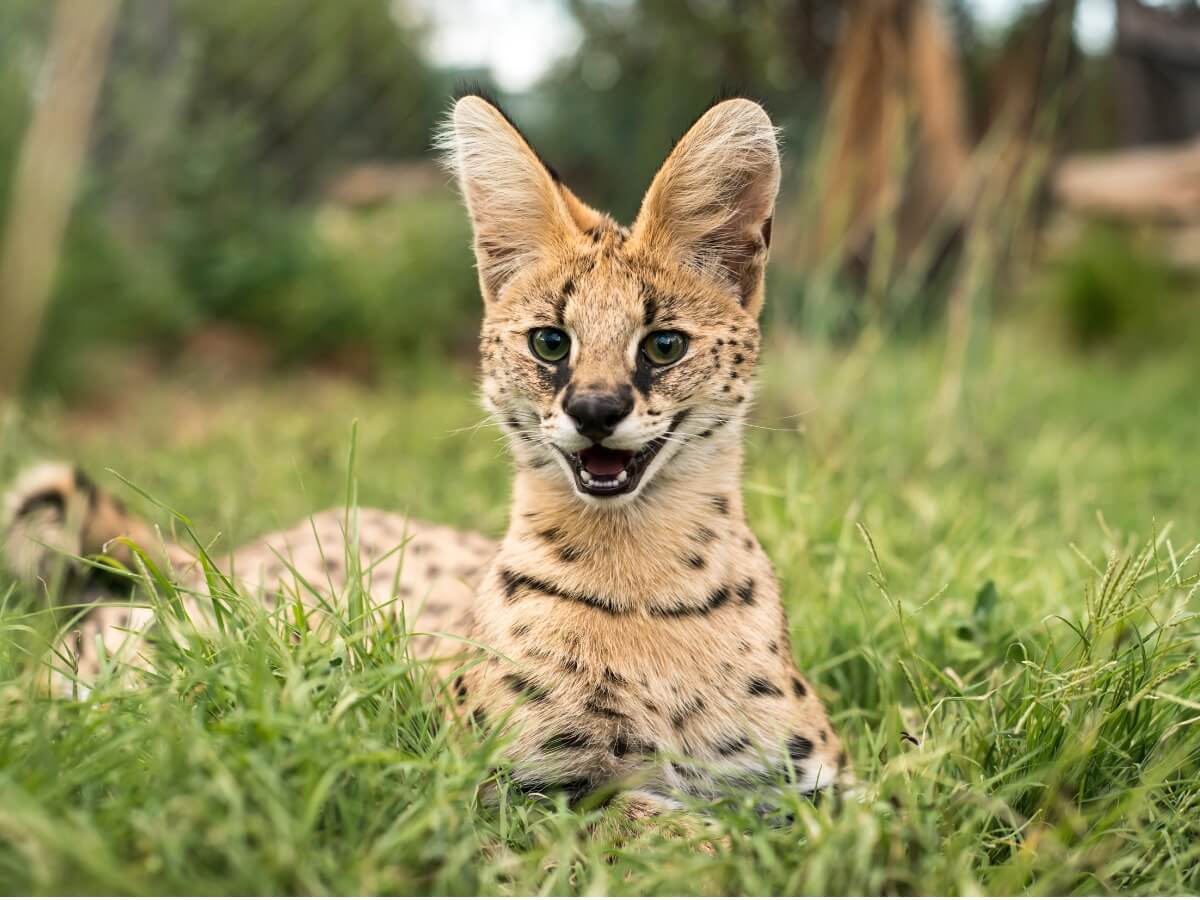
3. Ocelot (Leopardus pardalis)
This species is quite famous because it looks quite a lot like a domestic cat, and in its juvenile stage it could even be mistaken for one. The ocelot is of medium size with a length of between 70 and 90 centimeters (2.3 to 3 feet), but a low weight of just 11 kilograms (24 pounds).
Although it’s one of the smallest felines on the list, it has a strong bite that reaches just over 101 kilograms (222 pounds) in bite force. This surpasses the caracal and the serval, which are slightly larger than the ocelot.
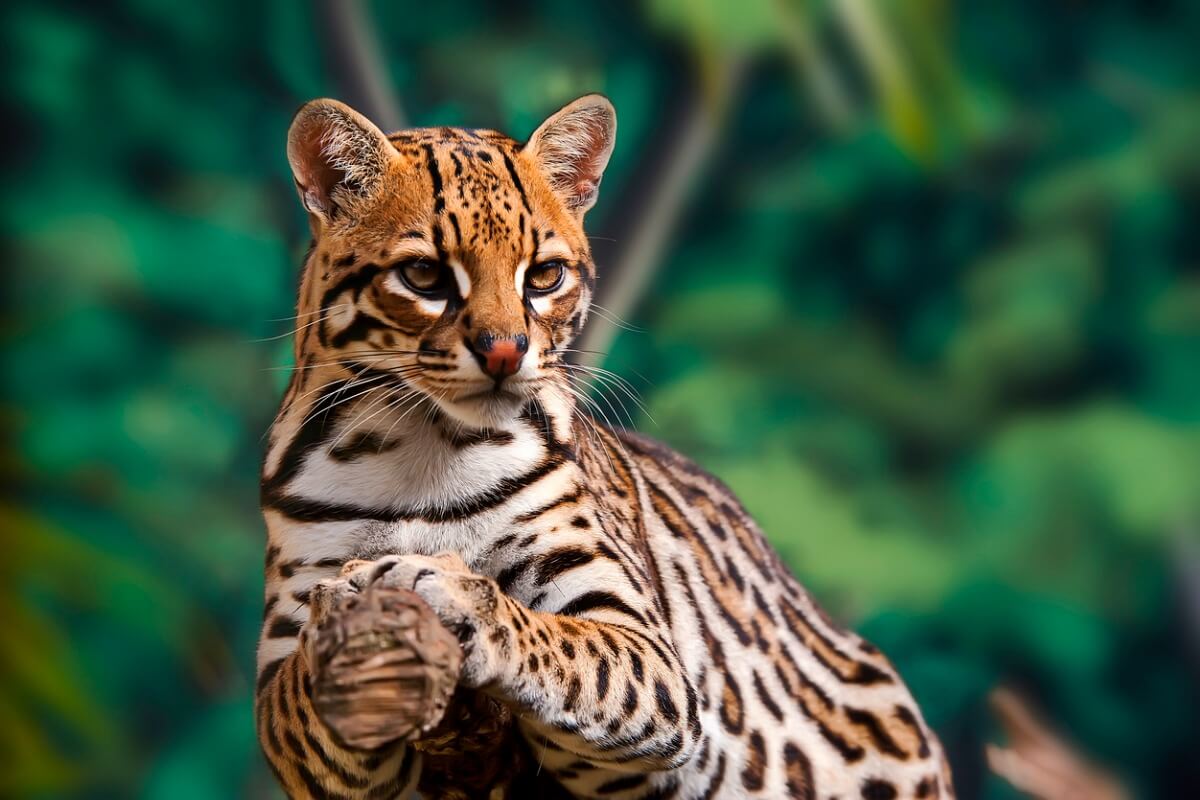
4. Bobcat (Lynx rufus)
The bobcat (also known as the red lynx) is a magnificent species with a fierce demeanor and colorful coat. It measures between 60 and 100 centimeters long (2 to 3.3 feet) and weighs between 4 and 15 kilograms (8.8 to 33 pounds). This feline has the weakest bite on our list, and can only exert a little less than 70 kilograms (around 150 pounds) of bite force.
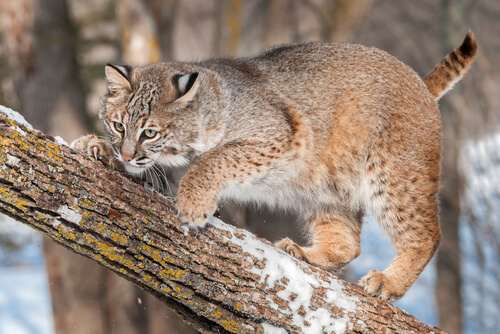
5. Clouded leopard (Neofelis nebulosa)
The neotropical panther is a medium-sized feline characterized by its great climbing agility. It has arboreal habits and moves quickly among branches. On average, it measures between 60 and 110 centimeters long (2 to 3.6 feet), with weights of up to 65 kilograms (143 pounds) in the heaviest individuals.
Apart from having a majestic appearance and enviable agility, it’s also one of the felines with the strongest bites, as it can produce between 130 and 160 kilograms (286 to 352 pounds) in bite force. This means that it almost doubles the bite force of the lynx, the serval, the caracal, and the ocelot.

6. Leopard (Panthera pardus)
The leopard is perhaps one of the most representative species amongst felines, as its magnificent spotted coat and deafening roar make it quite imposing. It’s usually between 1 and 1.9 meters (3.2 to 6.2 feet) and can weigh up to 90 kilograms (around 200 pounds).
Because it has quite a large body, it isn’t surprising that its bite force is between 160 and 226 kilograms (around 350 to 500 pounds). This is just one of the reasons why it’s an excellent and fearsome predator.
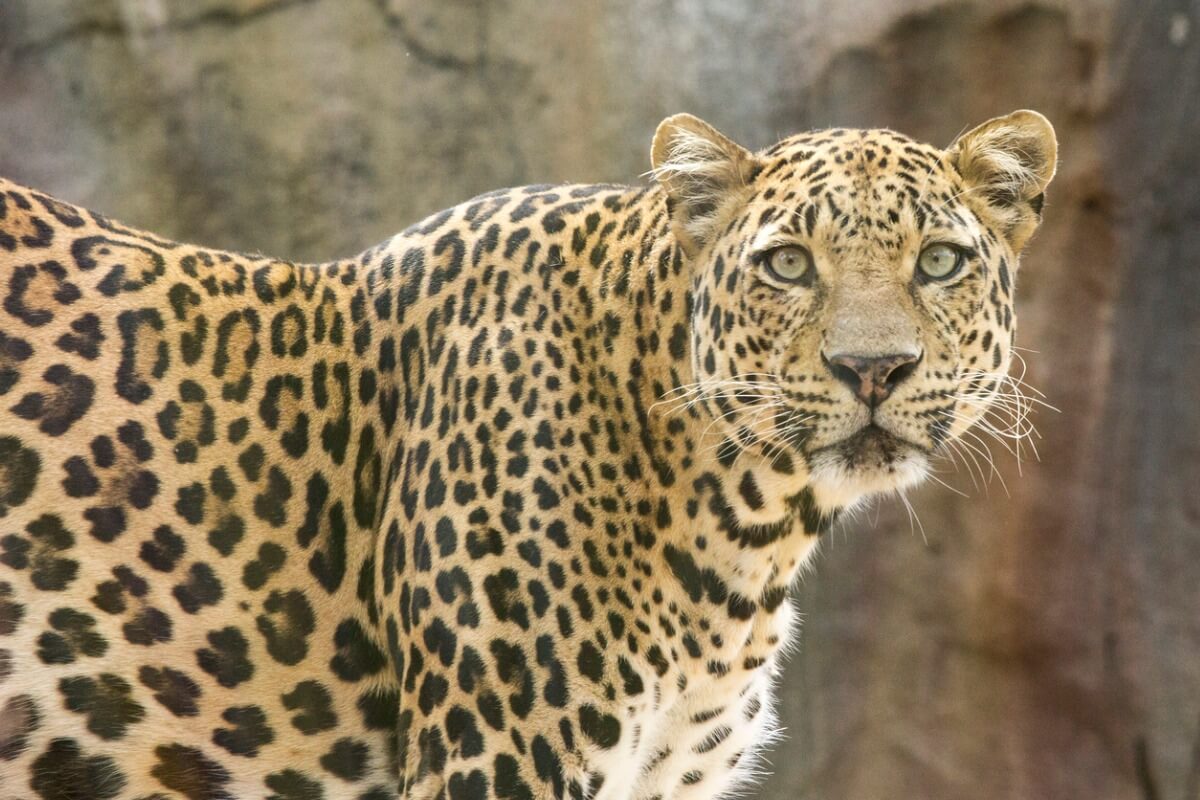
7. Snow leopard (Panthera uncia)
The snow leopard is considered the king of the mountains, as it usually lives at more than 6000 meters (3.7 miles) above sea level. It measures between 70 and 150 centimeters long (2.5 to 5 feet) and weighs an average of 32 kilograms (70 pounds). Because it’s smaller than the leopard, its bite force is slightly less, at a maximum of 205 kilograms (450 pounds). This isn’t such a big difference, but in a fight it could be decisive.
8. Tiger (Panthera tigris)
The tiger is one of the largest felines in existence, and it isn’t surprising that it has the strongest bite force out of all of them. Specifically, its jaw boasts a bite force of between 700 and 910 kilograms (around 1500 to 2000 pounds), which is more than 10 times a human’s bite. Thanks to this, it’s capable of subduing quite powerful animals such as water buffaloes.
9. Jaguar (Panthera onca)
Finally, the jaguar is another of our felines with the strongest bite. It’s able to apply just over 700 kilograms (1500 pounds) of bite force during an attack, which is slightly less than the tiger. However, it’s half the size of the tiger, and so experts actually consider it to have the strongest jaw in existence in relation to its overall size.
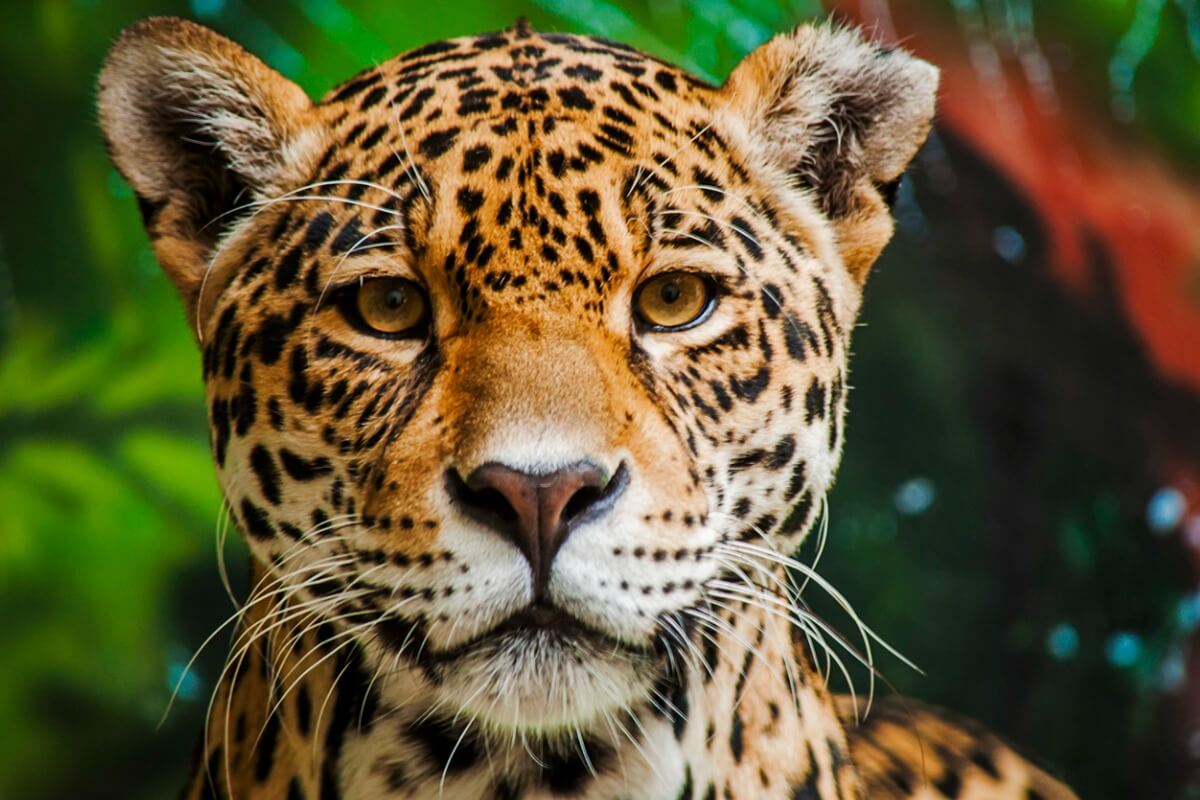
With all that we’ve told you today, it’s clear that you wouldn’t want to find yourself face to face with any of these felines, as with one bite the results could be fatal. Despite their ferocity and how dangerous they are, you can’t deny that they’re impressive animals. And now you’ve also got a better idea of why they’re such excellent predators in their respective habitats.
Felines are characterized by very flexible, slender, and dynamic bodies that help them to hunt with great dexterity. They’re obligate carnivores, and have specialized in stalking and capturing their prey. They also have powerful jaws with sharp fangs that are a deadly and efficient tool in hunting and feeding. But which are the felines with the strongest bites?
The Felidae family contains many different species, among which domestic cats, panthers, lions, and leopards stand out. Most of these felines have solitary behavior, and have developed bites that are strong enough to ensure they kill their victim in a matter of seconds. Keep reading to discover the felines with the strongest bites and most powerful and lethal jaws.
Felines with the strongest bites
An animal’s bite strength is usually measured in units of pressure per square surface. Therefore, it’s calculated in kilogram-force (pound-force) which calculates the pressure exerted by each jaw as it closes. This measurement increases or decreases according to the number and characteristics of the skull muscles.
Because it takes into account the particular conditions of each animal, the kilogram-force, or pound-force, isn’t affected by size, so it can be used to make fair comparisons between species. In fact, it could serve quite well to compare the bite forces of some felines. With this in mind, here’s a list of candidates that might have the most powerful bite of the bunch.
1. Caracal (Caracal caracal)
The caracal is a beautiful feline that shares some similarities with domestic cats, with the big difference being that its ears are quite large and stand out on its body. It measures on average between 60 and 90 centimeters long (2 to 3 feet), but its weight is fairly light at 14 to 17 kilograms (30 to 37 pounds).
Due to its small size, its bite force only reaches between 70 and 100 kilograms (154 to 220 pounds) in strength. However, this isn’t bad at all, as it’s almost double what an average-aged human can manage.
2. Serval (Leptailurus serval)
The serval is another magnificent feline that measures between 67 and 100 centimeters (2.2 to 3.3 feet) in length, with weights ranging from 8 to 17 kilograms (17 to 37 pounds). This makes it one of the smallest on the list, but this doesn’t mean that it hasn’t got a powerful bite. It can exert around 70 to 90 kilograms of bite force with its jaw (154 to 200 pounds), so it’s on a par with the caracal.

3. Ocelot (Leopardus pardalis)
This species is quite famous because it looks quite a lot like a domestic cat, and in its juvenile stage it could even be mistaken for one. The ocelot is of medium size with a length of between 70 and 90 centimeters (2.3 to 3 feet), but a low weight of just 11 kilograms (24 pounds).
Although it’s one of the smallest felines on the list, it has a strong bite that reaches just over 101 kilograms (222 pounds) in bite force. This surpasses the caracal and the serval, which are slightly larger than the ocelot.

4. Bobcat (Lynx rufus)
The bobcat (also known as the red lynx) is a magnificent species with a fierce demeanor and colorful coat. It measures between 60 and 100 centimeters long (2 to 3.3 feet) and weighs between 4 and 15 kilograms (8.8 to 33 pounds). This feline has the weakest bite on our list, and can only exert a little less than 70 kilograms (around 150 pounds) of bite force.

5. Clouded leopard (Neofelis nebulosa)
The neotropical panther is a medium-sized feline characterized by its great climbing agility. It has arboreal habits and moves quickly among branches. On average, it measures between 60 and 110 centimeters long (2 to 3.6 feet), with weights of up to 65 kilograms (143 pounds) in the heaviest individuals.
Apart from having a majestic appearance and enviable agility, it’s also one of the felines with the strongest bites, as it can produce between 130 and 160 kilograms (286 to 352 pounds) in bite force. This means that it almost doubles the bite force of the lynx, the serval, the caracal, and the ocelot.

6. Leopard (Panthera pardus)
The leopard is perhaps one of the most representative species amongst felines, as its magnificent spotted coat and deafening roar make it quite imposing. It’s usually between 1 and 1.9 meters (3.2 to 6.2 feet) and can weigh up to 90 kilograms (around 200 pounds).
Because it has quite a large body, it isn’t surprising that its bite force is between 160 and 226 kilograms (around 350 to 500 pounds). This is just one of the reasons why it’s an excellent and fearsome predator.

7. Snow leopard (Panthera uncia)
The snow leopard is considered the king of the mountains, as it usually lives at more than 6000 meters (3.7 miles) above sea level. It measures between 70 and 150 centimeters long (2.5 to 5 feet) and weighs an average of 32 kilograms (70 pounds). Because it’s smaller than the leopard, its bite force is slightly less, at a maximum of 205 kilograms (450 pounds). This isn’t such a big difference, but in a fight it could be decisive.
8. Tiger (Panthera tigris)
The tiger is one of the largest felines in existence, and it isn’t surprising that it has the strongest bite force out of all of them. Specifically, its jaw boasts a bite force of between 700 and 910 kilograms (around 1500 to 2000 pounds), which is more than 10 times a human’s bite. Thanks to this, it’s capable of subduing quite powerful animals such as water buffaloes.
9. Jaguar (Panthera onca)
Finally, the jaguar is another of our felines with the strongest bite. It’s able to apply just over 700 kilograms (1500 pounds) of bite force during an attack, which is slightly less than the tiger. However, it’s half the size of the tiger, and so experts actually consider it to have the strongest jaw in existence in relation to its overall size.

With all that we’ve told you today, it’s clear that you wouldn’t want to find yourself face to face with any of these felines, as with one bite the results could be fatal. Despite their ferocity and how dangerous they are, you can’t deny that they’re impressive animals. And now you’ve also got a better idea of why they’re such excellent predators in their respective habitats.
All cited sources were thoroughly reviewed by our team to ensure their quality, reliability, currency, and validity. The bibliography of this article was considered reliable and of academic or scientific accuracy.
- Hartstone‐Rose, A., Perry, J. M., & Morrow, C. J. (2012). Bite force estimation and the fiber architecture of felid masticatory muscles. The Anatomical Record: Advances in Integrative Anatomy and Evolutionary Biology, 295(8), 1336-1351.
- Christiansen, P. (2007). Comparative bite forces and canine bending strength in feline and sabretooth felids: implications for predatory ecology. Zoological Journal of the Linnean Society, 151(2), 423-437.
- Alfaro Moctezuma, P. E., Ángeles Medina, F., Osorno Escareño, M. D. C., Núñez Martínez, J. M., & Romero Esquiliano, G. (2012). Fuerza de mordida: su importancia en la masticación, su medición y sus condicionantes clínicos. Parte II. Revista adm, 69(3).
- Christiansen, P. E. R. (2008). Evolution of skull and mandible shape in cats (Carnivora: Felidae). PLoS One, 3(7), e2807.
This text is provided for informational purposes only and does not replace consultation with a professional. If in doubt, consult your specialist.








